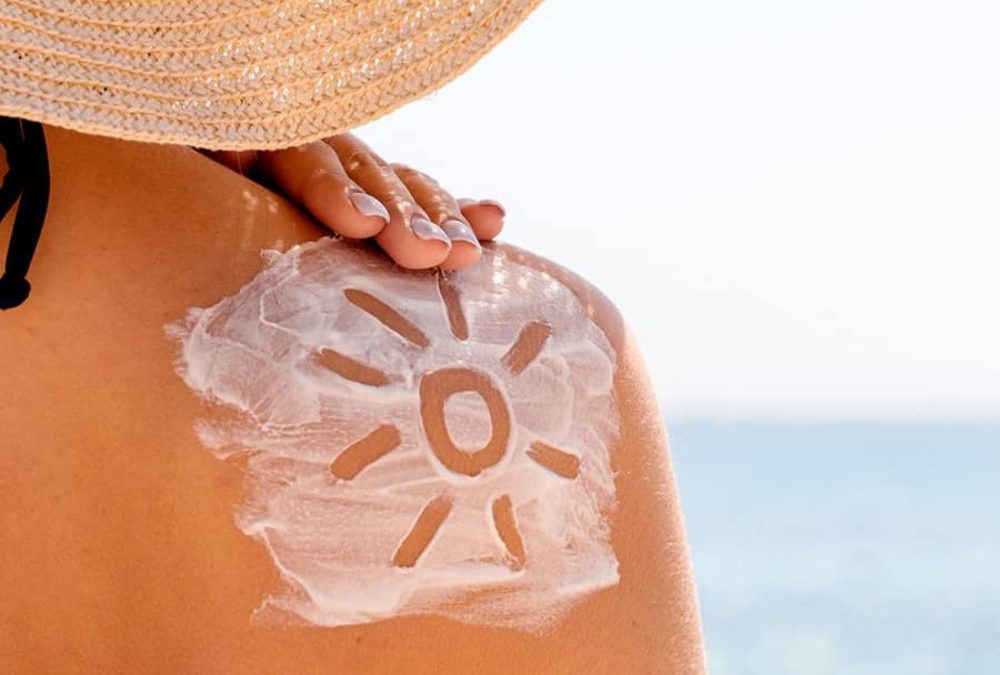
Stronger Bones Can Prevent and Treat Osteoporosis

Taking steps to strengthen your bones can help you stay healthy and active in the future.
Understanding Osteoporosis
Osteoporosis is a disease that leads to weak bones. About 4.2% of men and 18.8% of women over the age of 50 have this condition.
When you are younger, your body goes through an ongoing process of breaking down old bone tissue and creating new bone to replace it. However, your body will start creating new bone at a slower rate. After this time, your bone tissue will continue to be eliminated, but your body may not make enough new tissue to replace the bone loss. Therefore, it’s important to strengthen the bone you have and to take measures to prevent your bones from being broken down.
If your bones become too weak and fragile, you may be diagnosed with osteoporosis. This condition may occur if:
- You have a very low bone mineral density (a measure of how much calcium and other minerals are present within your bone tissue)
- You lose too much bone mass and your bones become thin
- Your bone structure or quality begins to change
People with osteoporosis are more likely to experience bone breaks or fractures. The most commonly broken bones in people with osteoporosis are the hip, wrist, and spinal vertebrae. In fact, half of all women age 50 and above will experience a fracture in one of these bones at some point during their life. However, it is possible to break any bone.
Osteoporosis is related to another similar disorder called osteopenia. Osteopenia or low bone mass also leads to weakened bones but isn’t as severe as osteoporosis. However, people with osteopenia can develop osteoporosis in the future.
Symptoms of Osteoporosis
Many people with osteoporosis don’t realize they have the condition. They often don’t have symptoms when the disease is still in its early stages, and they may only discover that they have weakened bones when they experience a fracture.
In some cases, people may develop noticeable symptoms, such as:
- A decrease in height
- A stooped posture
- Back pain due to a compression fracture of the spinal vertebrae
- Kyphosis (a curving of the top area of the spine, leading to a round hump in the upper part of the back or base of the neck)
What Causes Osteoporosis?

- Are older and have gone through menopause or have decreasing hormone levels
- Went through early menopause, either naturally or as a result of surgery to remove the ovaries
- Have experienced a period of time (at least three months in a row) in which you don’t have menstrual periods
- Are underweight (weigh less than 127 pounds)
- Have family members who have had osteoporosis
- Have experienced a bone fracture after the age of 50
- Don’t consume enough foods or drinks that contain calcium or vitamin D
- Have a condition that prevents your body from absorbing calcium from the things you eat (for example, you’ve had gastric bypass surgery)
- Drink a lot of alcohol
- Smoke cigarettes
- Are not very physically active
- Have a disorder that causes chronic inflammation
- Take certain medications that can weaken the bones
- Have anorexia, bulimia, or another eating disorder
Certain people are also more likely to develop osteoporosis. Women get this condition more often than men — four out of five people with osteoporosis are women. There are a couple of reasons for this. First, women tend to naturally have smaller, less dense bones compared to men. Additionally, estrogen helps lengthen the lifespan of osteoblasts — the cells that build new bone tissue. When women go through menopause, they produce far less estrogen, making them lose bone more quickly. Finally, women are more likely to live longer than men, and bone strength decreases over time.
White women and Asian women get osteoporosis more often than Black women and Hispanic women. However, all women have some risk of developing the condition. White men are also more likely to develop osteoporosis than men of other races and ethnicities.
Diagnosing Osteoporosis

Public health experts recommend undergoing a DXA to screen for osteoporosis about once every two years. The Centers for Disease Control and Prevention (CDC) recommends DXA screening for women over the age of 65. Additionally, screening may be a good idea for women between the ages of 50 and 64 who have certain risk factors (such as having a family history of osteoporosis).
A DXA may also be paired with other diagnostic tests. Your doctor may recommend a vertebral fracture assessment (VFA) — a spine X-ray that can determine if you have any breaks in your spinal vertebrae. You may also undergo blood and urine tests to look for any other health issues that could be causing bone loss.
Preventing and Treating Osteoporosis
By focusing on your bone health, you can take measures to strengthen your bones or prevent additional bone loss. These strategies may help you avoid having problems with low bone density in the future. Alternatively, if you have already been diagnosed with osteoporosis, these measures may help you prevent your condition from worsening.
Getting More Calcium and Vitamin D
Boost your bone strength with important nutrients like calcium and vitamin D. Calcium is important for many parts of the body, including the bones, muscles, nerves, and blood vessels. The body’s main way of storing calcium is in the bones. When you don’t get enough calcium from your diet, your body will remove it from your bones, making them weaker.
Foods and drinks that contain calcium include:
- Dairy products like milk and yogurt
- Spinach, kale, bok choy, and other dark green leafy vegetables
- Broccoli
- Cans of sardines or salmon that contain bones
- Foods with added calcium, such as tofu, soy milk, breakfast cereal, and orange juice
You also need vitamin D in order for your digestive system to absorb calcium from your food. To get more vitamin D, reach for:
- Milk
- Milk alternative products like soy milk and oat milk
- Oily fish such as salmon, tuna, and trout
- Mushrooms
- Beef liver
- Egg yolks
- Foods with added vitamin D, including some kinds of yogurt, margarine, and breakfast cereals
To check whether certain foods contain calcium or vitamin D, check the Nutrition Facts label. The best food sources of calcium will provide at least 20% of your daily value of this nutrient.
You can also take supplements that contain calcium, vitamin D, or both. Your skin also makes vitamin D when you are in the sun. However, too much sun exposure can increase your risk of skin cancer, so it’s a good idea to get vitamin D from your diet and protect yourself from the sun when you’re outside.
Lifestyle Changes

, One great way to increase or maintain bone density is through weight-bearing exercises. This includes any type of activity in which your muscles pull on your bones. You may want to try:
- Walking
- Jogging
- Hiking
- Climbing stairs
- Doing aerobics
- Weight training (lifting weights or performing bodyweight exercises)
- Playing tennis
- Dancing
- Yoga
- Tai chi
Before trying a new exercise or increasing your levels of physical activity, it’s a good idea to talk to your doctor. If you already have osteoporosis, you should avoid activities that twist your spine or put pressure on your back, including swinging a golf club, doing sit-ups, or performing toe touches. You may also need to stay away from activities like step aerobics that place a lot of pressure on your joints and may lead to fractures.
Other lifestyle changes can also help you protect your bones. Alcohol disrupts the body’s ability to use calcium, make vitamin D, regulate stress levels, and maintain a proper balance of hormones. These factors can all decrease bone density. Therefore, limiting how much alcohol you drink may lessen your chances of developing bone problems.
Studies show that people who smoke cigarettes have a higher risk of osteoporosis and bone fractures. Their bones also take longer to heal after breaking. To support bone health, join a program to help you quit smoking or ask your doctor for advice.
Managing Other Health Conditions
Several disorders can increase the risk of osteoporosis. These include anorexia, rheumatoid arthritis, conditions that lead to hormone imbalances, gastrointestinal conditions, HIV infections, and certain types of cancer.
Working with your doctor to find an effective treatment plan and keep these conditions under control may help you avoid bone problems down the line.
Avoiding Medications That Cause Bone Loss
Some medications can weaken the bones, such as:
- Glucocorticoids (a type of steroid medication)
- Certain medications that treat rheumatoid arthritis or asthma
- Thiazolidinediones (a diabetes treatment)
- Proton pump inhibitors (drugs used to treat stomach ulcers and acid reflux)
- Selective serotonin reuptake inhibitors or SSRIs (medications prescribed for depression and anxiety)
- Medications that treat seizures
- Breast cancer or prostate cancer treatments that involve taking hormones
Taking Medication to Strengthen Bones
Certain medications can help prevent or treat osteoporosis. The most commonly used drugs are bisphosphonates, which help slow down the rate at which your body loses bone tissue. Other medications like Xgeva (denosumab) and Evenity (romosozumab) are antibody medications that block body processes that break down the bones.
Some osteoporosis medications contain hormones or related molecules that can help build up more bone. These treatments include Forteo (teriparatide), Tymlos (abaloparatide), Calcimar (calcitonin), parathyroid hormone analogs, estrogen therapy, and estrogen receptor modulators.
Staying Safe
Weakened bones lead to a greater risk of fractures, which may mean hospital visits, surgery, or a lot of bed rest. Preventing falls can help you stay safe and avoid breaking your bones.
Unfortunately, your risk of falling increases as you age. Eye problems, hearing difficulties, dulled reflexes, muscle weakness, and foot problems can all lead to falls. Additionally, you may have other health conditions or need to take medication that makes you feel tired, dizzy, confused, or off-balance.
Fortunately, there are several things you can do to help prevent falling and fractures, including:
- Take care of your eyes and ears — Get your sight and hearing tested regularly. Make sure to wear any glasses, contacts, or hearing aids you are prescribed.
- Get enough sleep — You are more likely to fall when you feel tired.
- Take your time getting up — Your blood pressure may drop and you may feel off-balance when you quickly stand up after sitting or lying down.
- Cut back on alcohol — The more that older adults drink, the more likely they are to break their hip.
- Be aware of medication side effects — Talk to your doctor if you think your drug regimen is making you feel tired or confused.
- Add more lighting in your home — Make sure all of your living spaces are well-lit, including stairways and long halls.
- Keep your floor clear — Attach carpets and rugs to the floor to avoid slipping, and don’t leave items or electric cords laying on the floor where you could trip over them.
- Wear proper shoes — Find shoes with a non-slip grip that offer comfortable support for your feet. Wear shoes in your home rather than socks or slippers with a slipperier sole.
- Use an aid when walking on slippery surfaces — Install a bar or seat in your shower and use a non-skid bathmat to help prevent falling on the wet shower floor. Spread salt on the steps or sidewalks near your home to keep them from icing over in the colder months.
- Ask your doctor about a cane or walker — Using assistive devices can help you avoid falling.
Getting Help With Osteoporosis
When your weakened bones go untreated, you may end up with fractures that cause a lot of pain, surgery, or disfigurement. However, there are a lot of treatment options that can strengthen the bones and help you avoid bad outcomes. Make an appointment with Dr. Connor to discuss whether it’s a good idea to be screened for osteoporosis, and work with your healthcare team to come up with a treatment plan if you are at risk of having bone problems.














